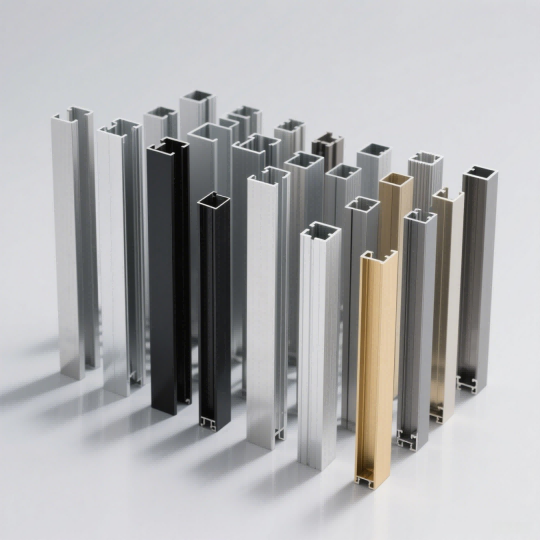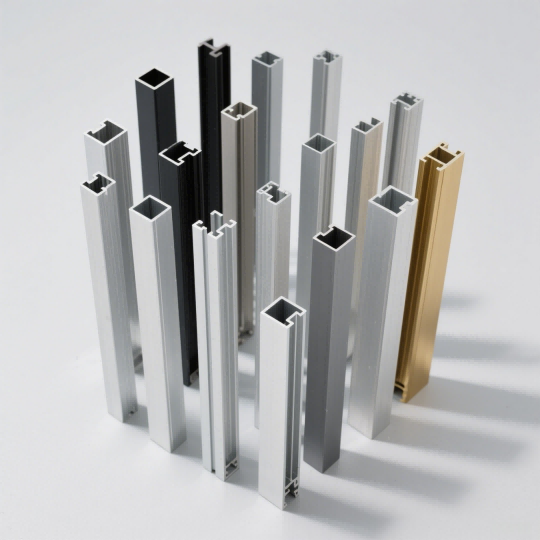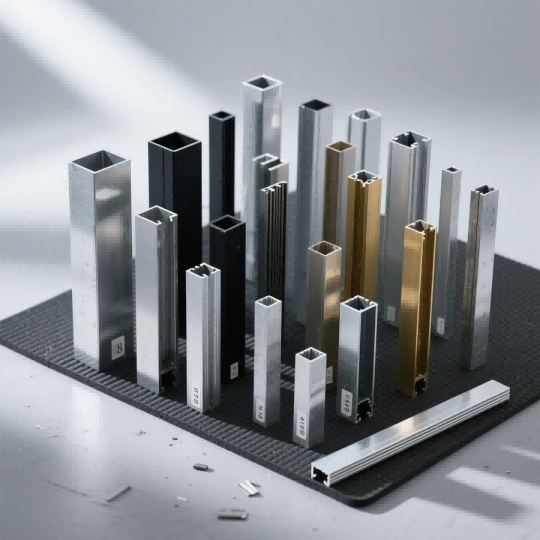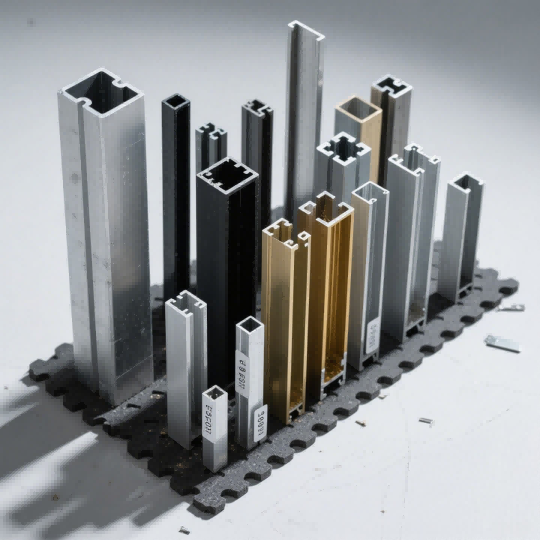
How to Use Aluminum Primer for a Flawless Finish: The Complete Guide Why Aluminum Primer Is Essential for a Lasting, Professional Finish Ever tried painting an aluminum surface, only to watch the paint peel or flake off within weeks? If so, you’re not alone. Aluminum’s sleek, non-porous exterior might look ideal for painting, but it actually poses unique challenges that set it apart from other metals. The secret to a flawless, durable finish? It all starts with the right aluminum primer. Understanding Aluminum’s Unique Challenges Aluminum is prized for its lightweight strength and corrosion resistance, making it a favorite in industries from automotive to architecture. But here’s the catch: aluminum naturally forms a thin, invisible oxide layer the moment it’s exposed to air. While this oxide layer protects the metal from corrosion, it’s also extremely smooth and chemically inert—meaning standard paints and primers simply won’t stick well. Imagine trying to paint a pane of glass; without the right preparation, the result is uneven, short-lived, and prone to peeling. What Is Aluminum Primer and Why Use It? This is where a primer for aluminum surfaces comes in. An aluminum primer is a specially formulated product designed to bond to the metal’s tough oxide layer. Its core function is to create an adhesive, paint-friendly surface that ensures the topcoat grips tightly and evenly. Applying the right primer solves common problems like: Poor paint adhesion Flaking and peeling Bubbling or uneven finishes Accelerated corrosion in harsh environments Beyond adhesion, aluminum primers often add a layer of corrosion protection, helping your painted surfaces withstand weather, UV rays, and even industrial chemicals. The result? A finish that looks professional and lasts far longer than paint alone. What to Expect in This Guide Ready to transform your aluminum projects? In this complete guide, you’ll learn: Why standard primers fall short on aluminum How to choose the right aluminum primer for your project Step-by-step application techniques for a flawless finish Real-world examples and expert tips for both DIY and professional results By understanding the science behind aluminum primer and following proven preparation and application steps, you’ll ensure your next aluminum project stands the test of time—no matter where or how it’s used. Why Standard Primers Fail When you paint wood or steel, standard primers usually do the trick. But have you ever wondered why painting aluminum is so much trickier? If you’ve experienced paint that peels off aluminum in sheets or bubbles after a single season outdoors, you’re not alone. The root of these problems with painting aluminum lies in the metal’s chemistry—and understanding it is the first step to a flawless, lasting finish. The Invisible Enemy: Aluminum Oxide Layer Aluminum’s surface is unique. The moment it’s exposed to air, it develops a thin, transparent oxide layer. Sounds protective, right? In fact, this oxide ...
Read More
The Ultimate Guide to Aluminum Pan Sizes: Dimensions, Uses, and Tips for Every Kitchen Introduction to Aluminum Pan Sizes Have you ever pulled a casserole from the oven, only to find the edges burnt while the center remains undercooked? Or maybe you’ve tried to serve a crowd, but your pan just wasn’t big enough? If so, you’re not alone. Whether you’re a home cook prepping weeknight dinners, a caterer planning for dozens, or an event planner organizing a feast, understanding aluminum pan sizes is a game-changer in the kitchen. Why does pan size matter so much? The answer is simple: the right pan ensures even cooking, helps you portion food accurately, and keeps meal prep efficient. Imagine roasting vegetables in a pan that’s too small—everything steams instead of caramelizing. Or picture lasagna in a pan that’s too deep, resulting in a soggy bottom. Choosing the correct pan size can make the difference between a kitchen win and a culinary mishap. Even Cooking: The right size allows heat to circulate properly, preventing under or overcooking. Efficient Meal Prep: Matching your pan to your recipe saves time and energy, especially when cooking for groups. Less Waste: Avoid making too much or too little by using pans that fit your serving needs. This guide is designed to demystify aluminum pan sizes for everyone. We’ll break down standard sizes, compare full and half pans, and provide an aluminum pan sizes chart for quick reference. You’ll also find tips for selecting the perfect pan for baking, roasting, catering, and more. By the end, you’ll have the confidence to choose the right pan for any recipe—no more guessing, no more kitchen surprises. Ready to make your kitchen more efficient and your meals more delicious? Let’s dive in and explore the world of aluminum pans, one size at a time. Breaking Down Full Size vs Half Size Aluminum Pans When you’re planning a meal or prepping for an event, you’ll quickly encounter a key decision: should you use a full size aluminum pan or a half size aluminum pan? Sounds complex? It doesn’t have to be. Let’s break down what these terms mean and how choosing the right size can streamline your cooking, serving, and storage. What Is a Full Size Aluminum Pan? Imagine you’re catering a large family gathering or setting up a buffet. The full size aluminum pan is the industry workhorse for big batches. Its generous surface area and depth make it ideal for feeding crowds and serving main dishes. Standard Dimensions: 20 3/4" length x 12 3/4" width Typical Depth Range: 1 11/16" to 3 3/8" (shallow to deep varieties) Common Uses: Roasting turkeys, baking large casseroles, serving pasta, rice, or entrees at buffets and events Best For: Large-scale catering, banquets, and occasions where you need to serve many guests at once Because of their size, full pans fit perfectly in standard chafing dishes and steam tables, ensuring even heating and easy serving throughout an event. Their large capacity also minimizes the number of pans ...
Read More
Flawless Aluminum Boat Paint: A Pro Guide Introduction to Aluminum Boat Paint When you picture a freshly painted aluminum boat gliding across the water, it’s easy to focus on the sleek look and vibrant color. But have you ever wondered why painting an aluminum boat is more than just a cosmetic upgrade? Imagine leaving your vessel exposed to the harsh marine environment—saltwater, sunlight, and constant moisture. Without the right protective coating, even the toughest aluminum will eventually show signs of wear, corrosion, and reduced performance. Aluminum boat paint serves a dual purpose: it not only enhances the appearance of your boat, making it stand out on the water, but also acts as a vital barrier against the elements. This protective layer helps prevent marine growth, reduces drag, and shields the hull from the damaging effects of corrosion and oxidation. In fact, proper painting is a key factor in maintaining your boat’s value and extending its lifespan, ensuring that your investment continues to deliver adventure and enjoyment for years to come. Sounds complex? Painting aluminum is not as straightforward as working with fiberglass or wood. Aluminum’s unique surface chemistry—its tendency to form a tough oxide layer and its non-porous nature—means that regular paints often fail to adhere properly or protect the hull over time. This is why specialized aluminum boat paint and dedicated primers are essential for a lasting, flawless finish. Product Selection: Choosing the right type of paint for your specific boating environment and needs. Surface Preparation: Cleaning, sanding, and priming to ensure maximum adhesion and durability. Application Techniques: Step-by-step guidance for a professional result, whether you’re a DIY enthusiast or a seasoned boater. Ongoing Maintenance: Tips for keeping your painted surface looking and performing its best. In this comprehensive guide, you’ll discover the science behind aluminum boat paint, how to avoid common pitfalls, and the best practices for achieving a stunning, long-lasting finish. Whether you’re restoring an old favorite or protecting a brand-new vessel, understanding the right approach to painting an aluminum boat will help you maximize both beauty and performance on the water. Why Standard Paint Fails on Aluminum Hulls Ever tried painting an aluminum boat only to see the finish flake off after a season? If so, you’re not alone. Painting aluminum isn’t like painting wood or fiberglass—and the reasons go deeper than you might think. Let’s break down the science and practical realities that make aluminum hulls a unique challenge, and why using the right products is essential for lasting protection. The Aluminum Oxide Layer: Friend and Foe When aluminum is exposed to air, it instantly forms a thin, invisible layer of aluminum oxide. This natural process actually helps protect the metal from further corrosion, but it also creates a surface that’s notoriously difficult for regular paints to stick t...
Read More
The Ultimate Aluminum Utility Trailer Buyer's Guide Why Aluminum Utility Trailers Are the Go-To Choice for Modern Hauling Have you ever needed to move heavy equipment, landscaping tools, or recreational gear—and wondered what’s the best trailer for the job? If so, you’re not alone. More and more individuals and businesses are turning to the aluminum utility trailer as their solution for reliable, efficient, and long-lasting hauling. But what makes these trailers stand out, and how do you choose the best aluminum utility trailer for your needs? Imagine you’re planning a cross-country camping adventure, or maybe you run a landscaping business that depends on transporting equipment every day. In either case, you need a trailer that’s easy to tow, resists the elements, and offers years of dependable service. That’s where aluminum utility trailers shine—offering a blend of lightweight construction and rugged durability that’s hard to beat. The popularity of aluminum utility trailers has soared in recent years, and for good reason. According to market research, the global demand for these trailers is growing rapidly, with the market expected to reach $1.5 billion in 2025 and continue expanding at a steady pace. This surge is driven by the need for trailers that are not only tough but also fuel-efficient and easy to maintain. Whether you’re hauling for work or play, the advantages of aluminum—such as corrosion resistance and reduced weight—are making these trailers the top pick for a wide range of users (source). In this comprehensive buyer’s guide, we’ll walk you through everything you need to know to make an informed choice, including: Why aluminum is preferred—from its lightweight nature to its impressive longevity How aluminum compares with steel—a side-by-side look at cost, durability, and performance Choosing the right size and axle configuration—matching trailer dimensions and features to your unique hauling needs Spotting quality brands and features—what separates the best aluminum utility trailer from the rest Smart buying tips—including inspection checklists and negotiation advice Maximizing long-term value—balancing upfront costs with maintenance, resale, and total ownership benefits Whether you’re searching for a trailer to support your business or enhance your weekend adventures, this guide is designed to help you find a dependable, durable solution that fits your budget and lifestyle. Let’s dive in and discover why the aluminum utility trailer has become the gold standard for today’s hauling needs. The Core Advantages of an Aluminum Utility Trailer When you’re considering a new trailer, you might ask yourself: “What makes an aluminum utility trailer such a smart investment?” Picture this—you’re loading up for a weekend trip, or hauling landscaping equipment for your business. The last thing you want is a trailer that’s heavy, prone to rust, or costly to maintain. That’s where the aluminum utility trailer benefits truly shine. Let’s break d...
Read More
Can Aluminum Be Painted? The Ultimate DIY Guide to a Lasting Finish Can Aluminum Be Painted? Ever wondered, can aluminum be painted to achieve a professional, lasting finish? The answer is a resounding yes—but it’s not as straightforward as painting wood, drywall, or other common surfaces. If you’ve tried painting aluminum before and noticed peeling or flaking, you’re not alone. That’s because aluminum, unlike many materials, forms a thin, invisible oxide layer the moment it’s exposed to air. This natural oxidation is great for corrosion resistance, but it also makes painting aluminum surfaces uniquely challenging. Sounds complex? Imagine painting a surface that’s constantly defending itself against anything trying to stick—including your paint. That’s aluminum for you! The oxide layer acts as a barrier, making the metal non-porous and slick. Without the right preparation, even the best paint will struggle to adhere, leading to disappointment and wasted effort. But don’t worry—this guide is here to demystify the process and set you up for success. Here’s what you’ll discover: Why aluminum needs special prep: We’ll break down the science behind aluminum’s paint resistance and the crucial role of cleaning, sanding, and priming. Step-by-step instructions: From essential cleaning and priming to the right way to sand and prep for a smooth, durable finish. Project-specific advice: Whether you’re tackling siding, trim, patio furniture, or wheels, you’ll find tailored tips for each scenario. Choosing the right paint: Not all paints are created equal—learn which formulas work best for aluminum and why. Expert maintenance tips: Get the know-how to keep your painted aluminum looking fresh for years to come. By the end of this comprehensive DIY guide, you’ll understand not just if aluminum can be painted, but how to do it right—saving you time, money, and frustration. For those seeking a truly seamless finish without the prep work, consider an alternative: factory-applied coatings on structural aluminum. Discover how pre-finished square tubing eliminates adhesion challenges while offering unmatched durability in our guide: Pre-Powder Coated Aluminum Square Tubing: Sizes, Costs & Applications. Ready to transform your next project? Let’s dive in! Why Paint Peels on Aluminum Ever notice how some paint jobs on aluminum look flawless at first, but soon start bubbling, flaking, or peeling away? If you’ve ever wondered why paint peels on aluminum, the answer lies in the metal’s unique chemistry—specifically, the aluminum oxide layer that forms the moment bare aluminum meets air. The Invisible Barrier: What Is the Aluminum Oxide Layer? When you expose fresh aluminum to oxygen, it doesn’t just sit there. It instantly reacts, creating a microscopic film called aluminum oxide. This layer is only a few nanometers thick, but it’s incredibly tough and non-porous. Here’s why that matters: Slick, non-porous surface: The oxide layer is smooth and dense, ma...
Read More online service
online service 0086 136 3563 2360
0086 136 3563 2360 sales@sxalu.com
sales@sxalu.com +86 136 3563 2360
+86 136 3563 2360